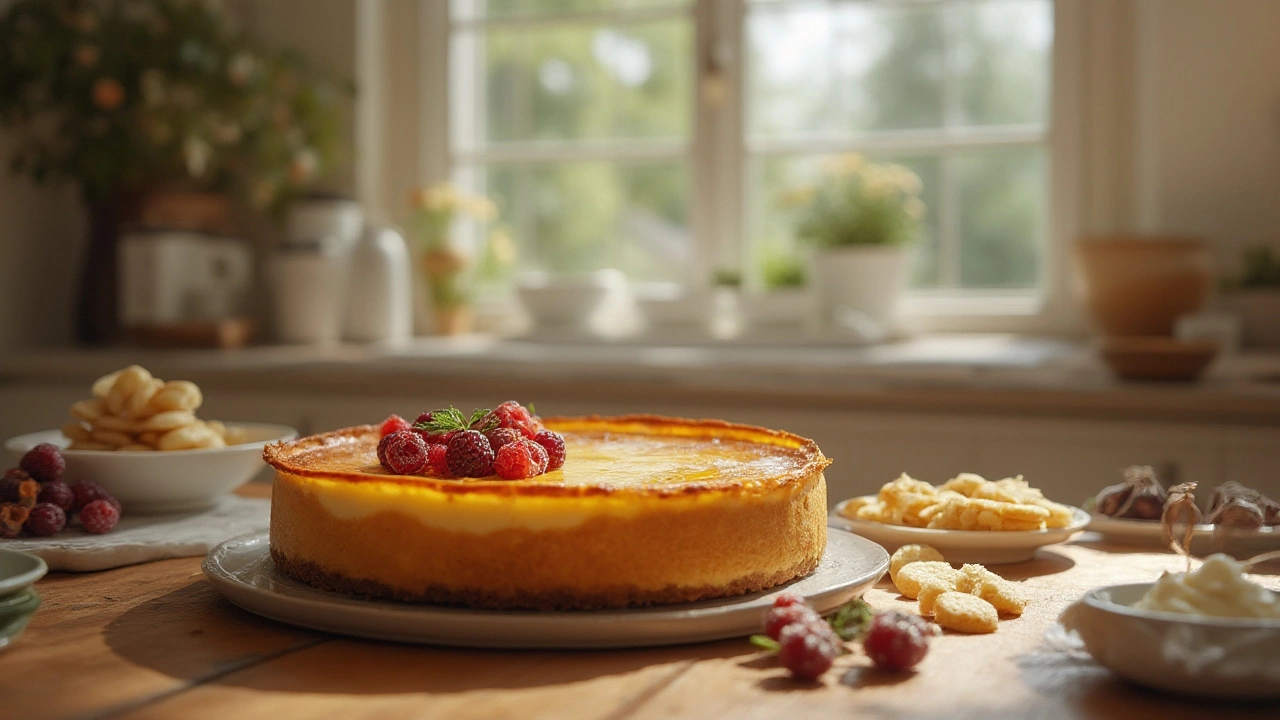
What Makes Cheesecake Taste So Good? The Delicious Science Explained
Ever wondered why cheesecake tastes so irresistible? This guide explores its creamy magic, secret ingredients, texture, and the science behind the perfect slice.
If you’ve ever wondered why some cheesecakes turn out creamy while others feel grainy, the answer usually starts with the ingredients. Picking the right cream cheese, sweetener, and crust can make the difference between a bakery‑level dessert and a kitchen flop. Below you’ll find the must‑have components, easy swaps, and practical tips to keep your cheesecake smooth, flavorful, and ready for any occasion.
The crust is the foundation, so treat it like a solid base for a house. Classic graham‑cracker crusts work for most flavors—just crush the crackers, mix with melted butter, and press into the pan. For a richer bite, try using digestive biscuits, Oreo crumbs (without the filling), or toasted nuts. A good rule of thumb is about 1½ cups of crumbs to ¼ cup melted butter; that ratio gives a firm yet tender edge that won’t crumble when you cut a slice.
If you’re looking for gluten‑free options, substitute the crackers with rice cereal, gluten‑free oat cookies, or ground almonds. The same butter ratio applies, and you’ll still get that buttery snap. Remember to bake the crust for 8‑10 minutes at 350°F (175°C) before adding the filling—this step locks in flavor and prevents sogginess.
The filling is where most of the magic happens. High‑quality, full‑fat cream cheese is non‑negotiable; low‑fat versions introduce excess water and can make the texture grainy. Soften the cheese at room temperature, then beat it with a hand mixer until smooth. Add sugar slowly—about ¾ cup for a standard 9‑inch cheesecake—so it dissolves completely before the next ingredient joins.
Eggs are the binding agent, but too many can cause cracking. Most recipes call for 2–3 large eggs for a 9‑inch cake. Beat them in one at a time, and stop mixing as soon as they’re incorporated. For extra silkiness, blend in a touch of sour cream, heavy cream, or Greek yogurt—about ¼ cup each. This adds a subtle tang and keeps the center from becoming dense.
Flavorings are where you personalize the cake. Vanilla extract is the default, but you can swap it for lemon zest, almond extract, or even a splash of coffee. Just keep the total liquid under 2 tablespoons to avoid a runny batter.
When it comes to sweeteners, regular granulated sugar works fine, but you can use brown sugar for a caramel note or a mix of honey and sugar for a softer sweetness. If you need a sugar‑free version, try erythritol or a monk‑fruit blend—just be mindful that some sugar substitutes can affect the texture if used in large amounts.
Finally, toppings finish the experience. Fresh berries, fruit compotes, chocolate ganache, or a drizzle of caramel are popular choices. If you want a no‑bake topping, simply whisk together powdered sugar, a splash of milk, and a dash of vanilla for a glaze that sets quickly.
Quick tips to remember:
With these ingredient basics and simple tricks, you’ll feel confident tackling any cheesecake recipe. Whether you stick to the classic New York style or experiment with chocolate swirl or pumpkin spice, the right ingredients set you up for success every time.

Ever wondered why cheesecake tastes so irresistible? This guide explores its creamy magic, secret ingredients, texture, and the science behind the perfect slice.